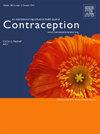密西西比州对自我管理堕胎的支持:一个离散的选择实验
IF 2.3
2区 医学
Q1 OBSTETRICS & GYNECOLOGY
引用次数: 0
摘要
目的自我管理药物流产(SMMA)越来越普遍,但在完全禁止的州,对SMMA的决策知之甚少。我们试图量化密西西比州对SMMA支持模式的偏好。方法利用学术界和社区的意见,设计了一个离散选择实验,包括药物来源(级别:在线、远程医疗、社区)、成本(0- 150美元)、信息支持(分发、热线、诊所咨询、导乐)和物质支持(无、必需品、自我保健包)的属性。我们采用基于社区的方便抽样方法,招募年龄在18-45岁的密西西比州有怀孕能力的居民。被调查者从10个选择任务中的每个选项中选择一个假设的SMMA模型。我们用层次贝叶斯模型估计了偏好和支付意愿。结果在2024年8月至2025年2月期间,163名受访者完成了离散选择实验:年龄中位数为30岁;84%的人被认为是黑人,39%的人无法支付意外的200美元医疗费用。一半的人至少有一个孩子,27%的人报告没有活产就结束了妊娠;69%的人听说过堕胎药。成本是选择SMMA模型时最重要的考虑因素;受访者还重视物质支持(愿意为自我护理套餐支付49美元,而不是没有支持),不太重视信息支持(愿意为面对面的支持选项支付25美元,而不是热线)。孕妇的偏好并没有因怀孕史而有所不同。无法支付意外医疗费用的受访者强烈倾向于降低成本。结论在选择假设的SMMA模型时,药物来源对密西西比州成年人的影响小于成本和物质支持的可得性。仅仅关注接入可能会忽视SMMA用户的偏好。本文章由计算机程序翻译,如有差异,请以英文原文为准。
PREFERRED SELF-MANAGED ABORTION SUPPORT IN MISSISSIPPI: A DISCRETE CHOICE EXPERIMENT
Objectives
Self-managed medication abortion (SMMA) is increasingly common, yet little is known about SMMA decision-making in states with complete bans. We sought to quantify preferences for SMMA support models in Mississippi.
Methods
We drew on academic and community input to design a discrete choice experiment with attributes of pill source (levels: online, telehealth, community), cost ($0-$150), information support (handout, hotline, clinic consult, doula) and material support (none, essentials, self-care package). We used community-based convenience sampling to recruit pregnancy-capable Mississippi residents aged 18-45. Respondents selected a hypothetical SMMA model from three alternatives in each of 10 choice tasks. We estimated preferences and willingness to pay with Hierarchical Bayes models.
Results
Between August 2024 and February 2025, 163 respondents completed the discrete choice experiment: median age was 30; 84% identified as Black, and 39% could not cover an unexpected $200 medical expense. Half had at least one child and 27% reported a pregnancy ending without live birth; 69% had heard of abortion pills. Cost was the most important consideration in selecting an SMMA model; respondents also valued material support (willing to pay $49 for self-care package vs. no support) and less so information support (willing to pay $25 for an in-person support option vs. hotline). Preferences did not differ based on pregnancy history. Respondents unable to cover unexpected medical expenses strongly preferred lower costs.
Conclusions
Source of pills mattered less to Mississippi adults than cost and availability of material support in selecting a hypothetical SMMA model. A focus on access alone may overlook SMMA users’ preferences.
求助全文
通过发布文献求助,成功后即可免费获取论文全文。
去求助
来源期刊

Contraception
医学-妇产科学
CiteScore
4.70
自引率
17.20%
发文量
211
审稿时长
69 days
期刊介绍:
Contraception has an open access mirror journal Contraception: X, sharing the same aims and scope, editorial team, submission system and rigorous peer review.
The journal Contraception wishes to advance reproductive health through the rapid publication of the best and most interesting new scholarship regarding contraception and related fields such as abortion. The journal welcomes manuscripts from investigators working in the laboratory, clinical and social sciences, as well as public health and health professions education.
 求助内容:
求助内容: 应助结果提醒方式:
应助结果提醒方式:


